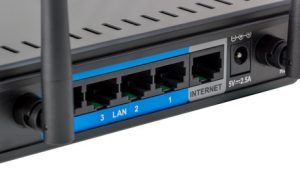30 years of texting
December 16th, 2022

This month marks the 30th anniversary of the first SMS (Short Messaging Service) message when Vodafone engineer Neil Papworth sent the words “Merry Christmas” from a computer to a mobile device.
Originally only intended as a means of internal communication for mobile service providers, the advent of affordable mobile phones meant that within a matter of years text messaging became hugely popular with the general public, peaking 10 years ago when some 150 billon SMS messages were sent in the UK alone.
While still widely used, SMS messaging has slowly been decreasing over the years as more advanced communications services are rolled out. WhatsApp, iMessage, Facebook Messenger and many other services allow for end-to-end encrypted messaging including the ability to share images, video and of course, emojis.
SMS will still likely be around for a number of years yet, with some 5.4 billion people on the planet owning a mobile device that can send and receive these messages without the need for a third party service. However, the glory days of texting are probably over and SMS is seen as being increasingly obsolete.
PTT has a range of courses covering mobile communications including “Wireless communications“, “Introduction to mobile systems” and “Mobile radio communications“.
In 2023 we will be releasing new courses “4G and 5G radio access networks” and “Advanced mobile systems” which cover the technologies that drive the latest mobile networks.
Comments Off on 30 years of texting
Broadband: The sky’s the limit
December 2nd, 2022

It is widely recognised that access to high speed broadband has become a necessity for businesses and homes. To meet the demand, many companies both old and new, are increasing the spread of fibre-based broadband to such an extent that overbuild exists in certain areas of the UK.
Despite this expansion of fibre to the premises (FTTP) services, those in more remote areas, where the provision of FTTP is deemed uneconomic, still suffer from slow speed Internet access.
But there are solutions to the challenge of serving hard to reach areas. Ofcom, the national regulator in the UK, is encouraging the use of low earth orbit (LEO) satellites by opening up extra radio spectrum for LEO operation. Allied to this, the UK government has announced the trial of SpaceX’s Starlink LEO satellites to improve Internet access in more rural areas. Recent tests have shown that broadband speeds of up to 200 Mbit/s are possible with Starlink, four times the average UK speed.
The European Union has gone a stage further by announcing the development of its own LEO satellite system.
5G fixed wireless access (FWA) offers an alternative solution. 5G provides mobile users with broadband speeds comparable with many fibre services. 5G FWA harnesses this capability to provide homes and offices with an alternative to copper or fibre connections to the Internet.
Ericsson, the telecoms equipment manufacturer, predicts there will be 300 million FWA users by 2028 with much of the growth taking place in emerging markets such as Mexico, South Africa and India.
The PTT course “Wireless communications” introduces satellite and FWA services. “Introduction to mobile systems” describes the capabilities of 5G, and “Telecoms access networks” describes the provision of copper and fibre broadband.
Comments Off on Broadband: The sky’s the limit
Ensuring reliable home internet
November 17th, 2022

Recent years have seen a marked improvement in broadband connections to residential properties. With the covid-19 pandemic increasing the amount of home working, customers are increasingly expecting enterprise-level internet connectivity in the comfort of their own homes.
In the UK, recent Ofcom figures show that the average speed of home broadband connections has increased by 60% since 2018. However, this new “higher” average download speed of 59.4Mbps is still a long way off the government target of offering 1GB download speeds to 85% of UK premises by 2025. While some of this speed gap is offset because many customers tend not to purchase packages that enable the full capacity speeds afforded by their connections, there is still much infrastructure to be built to meet government goals, as well as the expectations of consumers themselves.
Apart from the external infrastructure required, there is a need for the equipment in customer homes to be reliable. Some 70% of technical support calls fielded by ISPs about connection issues are ultimately caused by poor quality or incorrectly situated WiFi routers within the property itself.
Previously, ISPs could provide free, cheaply made WiFi routers to customers because the internet connections they were attached to were far slower than the maximum performance of the router. However, with many properties now allowing gigabit speeds, along with customers connecting many more devices to their home internet, WiFi routers with a superior performance are necessary.
Of course, such devices come at a cost, so ISPs now need to either expect their customers to pay more for this equipment, something they previously expected for free, or find some other way to offset the costs. Better home equipment should at least reduce the amount of technical support calls fielded.
The PTT course “Ethernet networks” describes the operation of Ethernet-based fixed line and wireless computer networks, including the characteristics of WiFi connections commonly found in the home.
The “Next generation access networks” course describes the components and operation of the copper and fibre-based networks that are required to provide modern, high-speed connections to homes and businesses.
Comments Off on Ensuring reliable home internet


